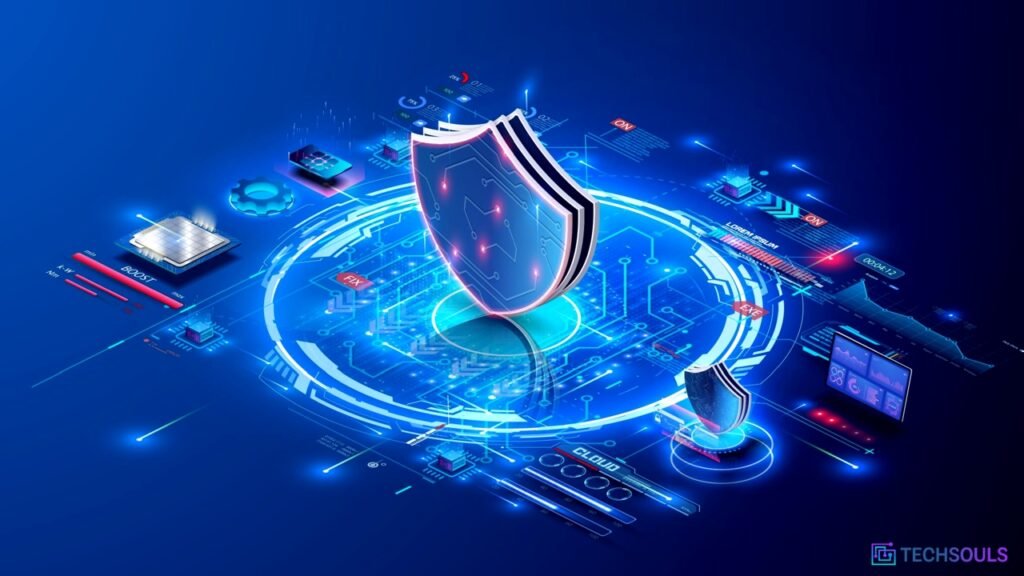
The financial industry plays a critical role in global economies, managing vast amounts of sensitive data and facilitating monetary transactions. With the increasing reliance on technology and interconnected systems, the industry faces numerous cybersecurity threats that can have severe consequences if not adequately addressed. In this article, we will explore the common cybersecurity threats faced by the financial industry and discuss effective preventive measures.
Read More: The 10 Most Important Tech Trend Predictions For 2023
Cybersecurity Threats to the Financial Industry
The rapid digitization of financial services has transformed the industry, offering convenience and efficiency to both consumers and institutions. However, it has also made financial institutions prime targets for cybercriminals. Hackers are continuously evolving their tactics to exploit vulnerabilities and gain unauthorized access to sensitive information, leading to financial fraud, data breaches, and reputational damage.
Common Cybersecurity Threats

Phishing: A Deceptive Threat
One prevalent cybersecurity threat in the financial industry is phishing. Cybercriminals use deceptive tactics, such as email spoofing and fake websites, to trick individuals into revealing their personal and financial information. Phishing attacks can lead to identity theft, compromised accounts, and unauthorized access to sensitive data.
Ransomware: Holding Data Hostage
Another significant threat is ransomware, a type of malware that encrypts a victim’s data and demands a ransom in exchange for its release. Financial institutions are attractive targets for ransomware attacks due to the potential for significant payouts. Such attacks can disrupt operations, cause financial loss, and damage the institution’s reputation.
Insider Threats: A Lesson in Trust
Insider threats pose a unique challenge to the financial industry. These threats involve employees or insiders who misuse their access privileges to steal sensitive data or disrupt operations. Financial institutions must implement robust access controls, monitoring mechanisms, and employee training to mitigate the risk of insider threats.
Social Engineering: Exploiting Human Vulnerabilities
Social engineering techniques exploit human vulnerabilities to manipulate individuals into divulging confidential information or performing unauthorized actions. Techniques like pretexting, baiting, and tailgating are commonly employed by cybercriminals to gain unauthorized access to financial systems. Comprehensive employee training programs are crucial to raising awareness and preventing social engineering attacks.
Impact of Cybersecurity Breaches
Cybersecurity breaches can have severe consequences for financial institutions, both financially and reputationally. The financial loss resulting from fraud, regulatory penalties, and legal settlements can be staggering. Additionally, the loss of customer trust and damage to the institution’s brand can have long-lasting effects, leading to decreased customer loyalty and market share.
Best Practices for Cybersecurity in the Financial Industry
To effectively protect against cybersecurity threats, financial institutions must adopt a comprehensive and proactive approach. Here are some best practices to consider:
Employee Training: The First Line of Defense
Educating employees about cybersecurity risks and best practices is essential. Regular training sessions should cover topics such as recognizing phishing attempts, handling suspicious emails, and reporting potential security incidents.
Network Security: Protecting the Perimeter
Implementing robust network security measures is crucial to safeguarding financial systems and data. This includes deploying firewalls, intrusion detection and prevention systems, and data loss prevention solutions. Regular vulnerability assessments and penetration testing help identify and address weaknesses.
Encryption: Securing Sensitive Data
Encrypting sensitive data both at rest and in transit adds an extra layer of protection. Strong encryption algorithms and key management practices should be employed to ensure the confidentiality and integrity of financial information.
Incident Response: A Rapid and Coordinated Approach
Developing an incident response plan is vital for minimizing the impact of cybersecurity incidents. The plan should outline the steps to be taken during an incident, including communication protocols, containment strategies, and recovery processes. Regular drills and testing are essential to validate and improve the plan’s effectiveness.
Regulatory Framework and Compliance
The financial industry operates within a complex regulatory environment, with various standards and compliance requirements. Compliance with regulations such as the General Data Protection Regulation (GDPR), Payment Card Industry Data Security Standard (PCI DSS), and Sarbanes-Oxley Act (SOX) is essential for financial institutions to avoid legal repercussions and maintain customer trust.
Emerging Cybersecurity Technologies
As cyber threats continue to evolve, financial institutions need to embrace innovative technologies to enhance their cybersecurity posture. Artificial intelligence and machine learning can be utilized for anomaly detection and threat hunting. Blockchain technology offers decentralized and tamper-proof transaction records, while biometrics provides advanced authentication mechanisms.
Cybersecurity Collaboration and Information Sharing
Collaboration and information sharing among financial institutions and cybersecurity organizations are crucial for combating cyber threats effectively. Sharing threat intelligence, vulnerabilities, and best practices helps establish a collective defence against evolving cybersecurity threats. Public-private partnerships and industry-wide initiatives play a vital role in fostering collaboration.
The Role of Cybersecurity Professionals
Skilled cybersecurity professionals are essential assets for financial institutions in the ongoing battle against cyber threats. Hiring and retaining qualified individuals with expertise in risk management, network security, incident response, and compliance is crucial. Encouraging continuous professional development and certifications further enhances the institution’s cybersecurity capabilities.
Incident Response and Business Continuity Planning
Developing a robust incident response plan and business continuity strategy is critical for financial institutions. These plans outline the actions to be taken during a cybersecurity incident, ensuring a swift and coordinated response. Regular testing and simulations help identify gaps and improve the institution’s readiness to handle cyber incidents.
Continuous Monitoring and Risk Assessment
Cybersecurity is an ongoing process that requires continuous monitoring and risk assessment. Implementing tools and techniques for real-time threat detection, vulnerability scanning, and security analytics helps identify and mitigate risks promptly. Regular risk assessments assist in identifying and prioritizing vulnerabilities based on their potential impact.
International Cybersecurity Cooperation
Cyber threats transcend national boundaries, necessitating international cooperation to combat them effectively. Financial institutions should actively participate in international cybersecurity initiatives, share threat intelligence, and collaborate with relevant organizations and government agencies to address global cybersecurity challenges.
The Future of Cybersecurity in the Financial Industry
As technology continues to advance, new cybersecurity challenges and opportunities emerge. Financial institutions must remain adaptable and proactive in their approach to cybersecurity. Future trends may include the rise of quantum computing, increased focus on IoT security, and advancements in regulatory frameworks to keep pace with evolving threats.
Read More: Online Trading in UK: A Guide to Financial Success
FAQs
1. What certifications are recommended for cybersecurity professionals in the financial industry?
Some popular certifications for cybersecurity professionals in the financial industry include Certified Information Systems Security Professional (CISSP), Certified Ethical Hacker (CEH), Certified Information Security Manager (CISM), and Certified Information Privacy Professional (CIPP).
2. How should financial institutions handle cybersecurity incidents?
Financial institutions should have an incident response plan in place that outlines the steps to be taken during a cybersecurity incident. This includes communication protocols, containment strategies, and recovery processes. Regular testing and drills help ensure an effective response.
3. How often should risk assessments be conducted in the financial industry?
Risk assessments should be conducted regularly, typically annually or whenever significant changes occur in the organization’s IT infrastructure or operating environment. Regular risk assessments help identify vulnerabilities and prioritize risk mitigation efforts.
4. How can financial institutions contribute to international cybersecurity efforts?
Financial institutions can contribute to international cybersecurity efforts by participating in public-private partnerships, sharing threat intelligence, collaborating with relevant organizations, and actively engaging in global initiatives aimed at combating cyber threats.
Conclusion
The financial industry faces a multitude of cybersecurity threats, ranging from phishing and ransomware to insider threats and social engineering attacks. Financial institutions must implement robust cybersecurity measures, including employee training, network security, encryption, incident response planning, and continuous monitoring. By staying proactive, collaborating with industry peers, and adopting emerging technologies, financial institutions can effectively protect themselves against cybersecurity threats and safeguard their assets and reputation.








2 Comments